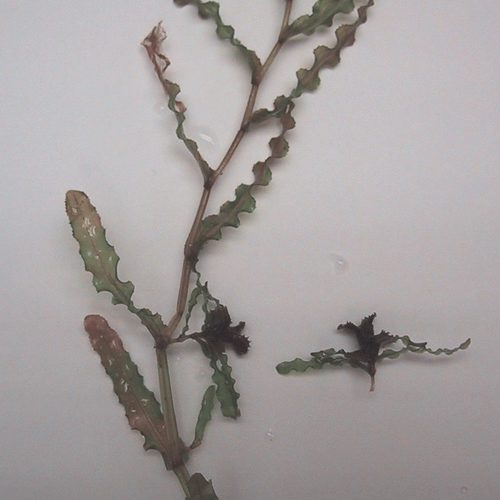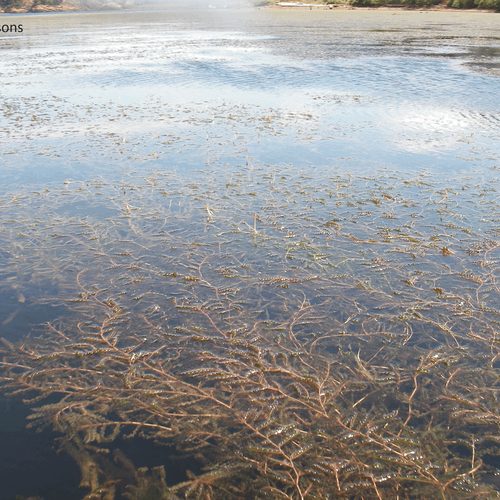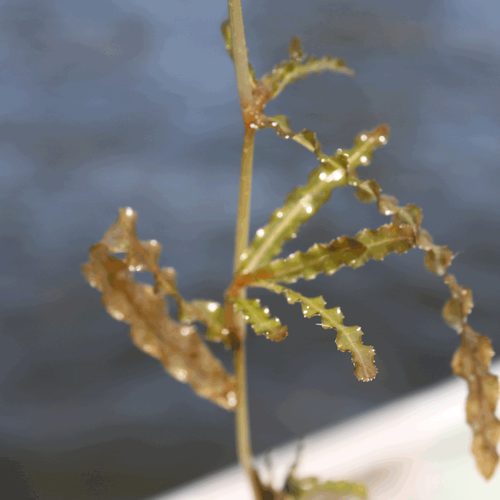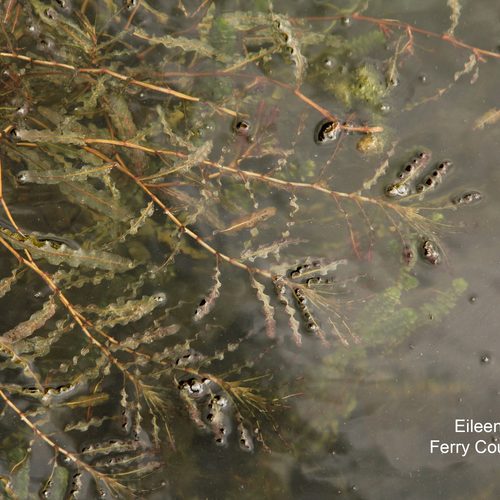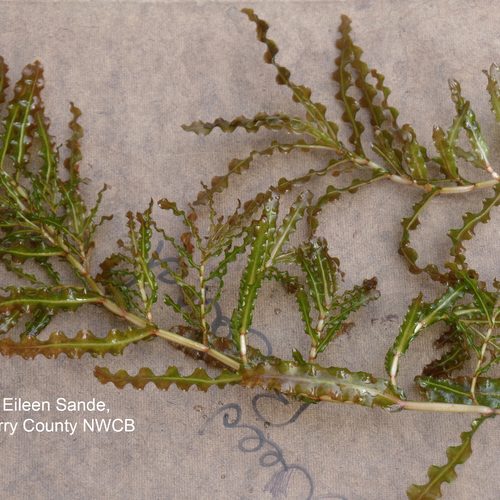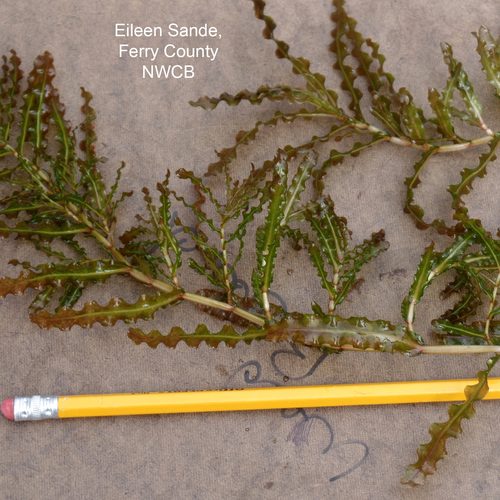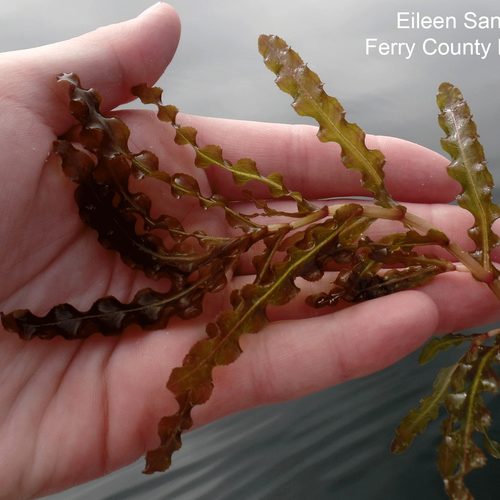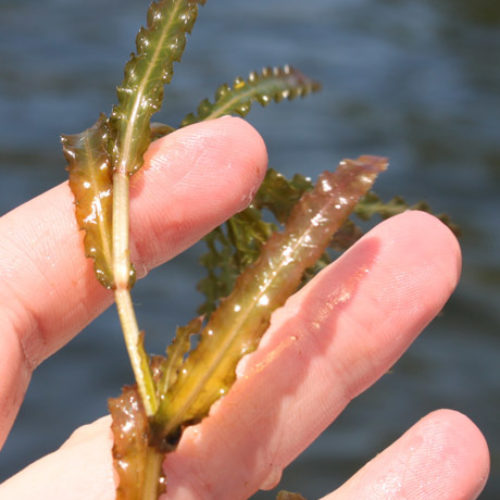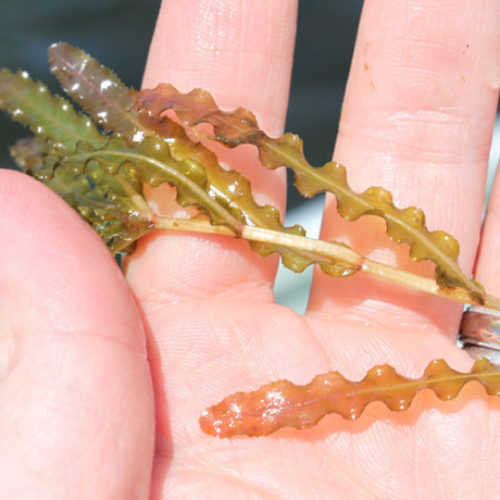Curlyleaf Pondweed
Potamogeton crispus
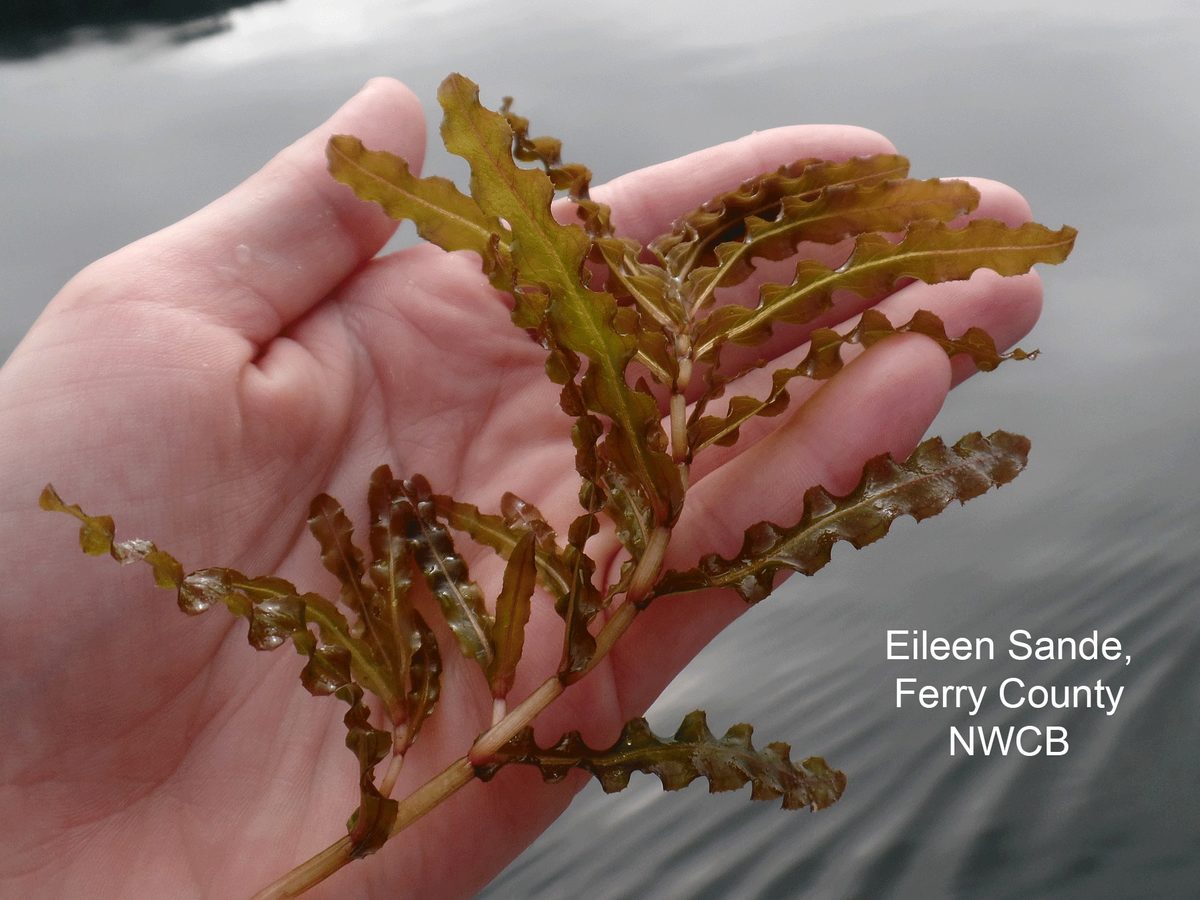
Family: Potamogetonaceae
Other Common Names: curly pondweed
Weed class: C
Year Listed: 2005
Native to: Asia, Europe, Australia and Northern Africa
Is this Weed Toxic?:
not known to be
Why Is It a Noxious Weed?
It is an invasive plant that forms surface mats, interfering with aquatic recreation. Dense colonies can restrict access to docks and sport fishing. Curly-leaf pondweed has been noted as one of the most severe nuisance aquatic plants in the Midwest.
How would I identify it?
General Description
Curly-leaf pondweed grows entirely underwater except for the flower stalk which rises above the water. It has distinctly wavy-edged, crispy olive-green to reddish-brown leaves. It usually grows early in spring and dies back in summer.
Flower Description
Flowers are tiny with 4 petal-like lobes and in spikes around 1 inch long from stalks that are up to 2.8 inches long.
Leaf description
Leaves alternate, all submersed without leaf stalks. Leaves oblong, stiff, (1.6 to 3.9 inches long by 0.2 to 1 inch wide) with distinctly wavy edges with fine teeth and 3 main veins.
Stem description
Stems are branched and grow to around 3 feet long and are somewhat flattened.
Fruit Seed Description
It is an achene that had 3 ridges and is 0.16 to 0.24 inch (4-6 mm) long, including a 0.08 to 0.12 inch (2-3 mm) beak.
Where does it grow?
It grows in shallow to deep, still or flowing water and is tolerant of disturbance. Please click here to see a county level distribution map of curlyleaf pondweed in Washington.
How Does it Reproduce?
It produces seeds, rhizomes and turions, but the importance of seed in the spread of populations is unknown and is assumed to be less important than turions. Typically it reaches peak biomass in the late spring/early summer months and forms turions.
How Do I Control It?
General information:
Make sure to clean watercraft, equipment, and boots to prevent spreading plants to new locations.
Mechanical/Manual:
Plants can be removed but care must be taken to prevent stem fragments escaping during control, as they can establish new plants in other locations.
Herbicide Control:
Use of pesticides in water is regulated in Washington State. All applicators must have an aquatic endorsement on their pesticide applicators license, which is issued by the Washington Department of Agriculture. In addition, coverage under a permit issued by the Department of Ecology is required. See the WA Department of Ecology for details or contact your county noxious weed board.
For More Information
See our Written Findings for more information about curlyleaf pondweed (Potamogeton crispus).
Whatcom County NWCB Fact Sheeton curlyleaf pondweed
Information from the book Weed Control in Natural Areas in the Western United States



